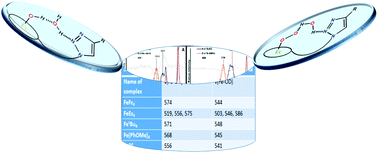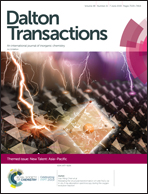Effect of hydrogen bonding on innocent and non-innocent axial ligands bound to iron porphyrins†
Abstract
Most known heme enzymes utilize hydrogen bonding interactions in their active sites to control electronic and geometric structures and the ensuing reactivity. The details of these weak 2nd sphere interactions are slowly unravelling through spectroscopic and theoretical investigations in addition to biochemical studies. In synthetic Fe porphyrins, nature of hydrogen bonding by iron bound hydroxide ligand (H bond acceptor or donor) is found to alter the spin state of Fe in a series of iron hydroxide complexes. In this study, a series of Fe porphyrins having a triazole ring appended in the distal site of the porphyrin macrocycle were synthesized. The triazole rings were substituted to systematically alter their electron densities, which tune their H bonding to water molecules trapped inside the distal cavity, and in turn H bonds to the axial ligands bound to the iron porphyrin. Resonance Raman data indicated that the metal ligand bond strength changes with the change in substituents on triazole rings for innocent ligands like hydroxide, as well as non-innocent ligands like oxygen, albeit the mechanisms by which hydrogen bonding affects these are very different. Additionally, H bonding interaction was also found to alter the pKa of ferric hydroxide complexes.

- This article is part of the themed collection: New Talent: Asia-Pacific


 Please wait while we load your content...
Please wait while we load your content...